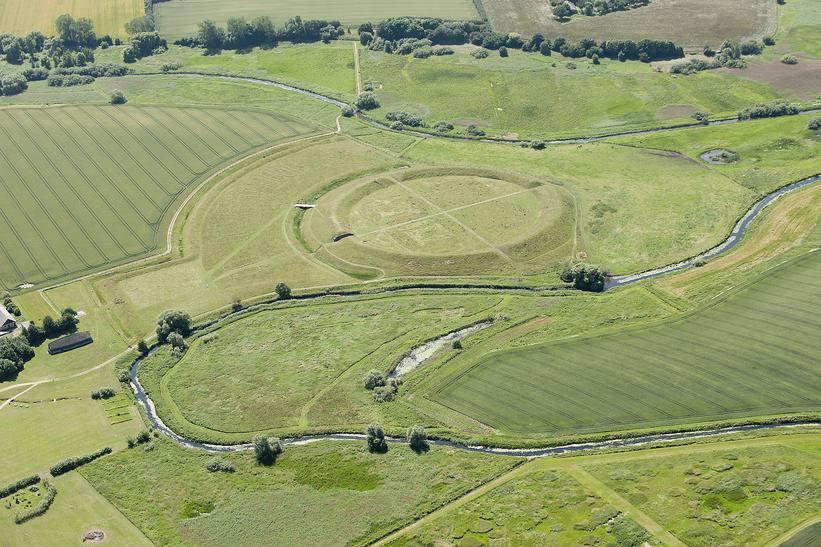
Trelleborg’s history
The historical background
Trelleborg, near Slagelse in West Zealand, is a part of the military power system of the Viking Age. Four other fortresses are known, which were obviously constructed in association with Trelleborg and are based upon the same model: Aggersborg on the north side of the Limfjord, Fyrkat near Hobro, Nonnebakken in Odense and Borgring in Køge. Aggersborg is the largest of these whilst Trelleborg is by far the best preserved and the only one with a fortified outer ward.
There are no known contemporary written sources that mention the ring fortresses. The lack of direct evidence in the historical sources is somewhat surprising given the gigantic effort that must have been involved in the constructions. It is possible that the absence of written sources can be explained by the fact that the fortresses were apparently only in use for a very short time, perhaps for as few as 10-15 years.
Trelleborg has been dated using dendrochronological dating of timber from its moats. The tree from which the wood came was felled between August 980 and May 981, and it is therefore certain that work was undertaken on the outer rampart around this time. It is not known precisely how long the whole construction process took but it seems likely that the dating to around 980 explains the function of the fortresses.
The political situation at this time has been the subject of much examination and, despite opposing theories, it seems clear that the ring fortresses were associated with Harald Bluetooth’s attempts to strengthen royal power in Denmark, which took place during this period. Harald proclaims on the large rune stone at Jelling that he “won for himself all of Denmark and Norway and made the Danes Christian”. It would be logical to conclude that the fortresses were part of an attempt to subdue petty kings and local chieftains, especially given the fact that a strong, central royal power was clearly the only actor with sufficient resources to undertake such an exercise.
The ring fortresses testify to the animosity, which Harald’s efforts were met with, and it is not surprising that the attempt unify the kingdom led to rebellion and civil war. The rebelling army was led by Sweyn Forkbeard, Harald’s son. According to tradition, Harald was killed in battle when a quick-witted warrior shot him in the back with an arrow as the King was answering the call of nature. This story is known from several written sources, in particular the Jomsvikinga Saga which identifies Harald’s killer as Palnatoke, a magnate from Funen. However, it is exceedingly doubtful that the account is true.
The interpretation of the ring fortresses as an element in the power struggles over the Crown may also explain their extremely short period of use. They were obviously expensive to keep manned and were probably dismantled shortly after the civil war when the question of the status of royal power had been resolved and there was no longer an immediate threat of rebellion.
It is not known with certainty whether the name of Trelleborg dates back to the time of the fortress’ construction but the fact that the same name has been used for its sister construction in Scania, Sweden, suggests that this was the case. Two interpretations of the fortress’ name has been proposed: it may have represented an insult to the petty kings and chieftains who were subjugated by the fortresses (“borge” in Danish) and therefore forced into slavery (“trældom”) for King Harald; or the name could refer to the construction itself as “trel” or “træl” is an Old Norse name for pieces of timber, which formed part of the house structures.